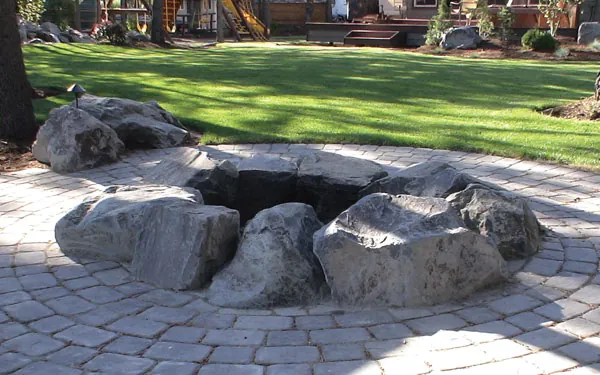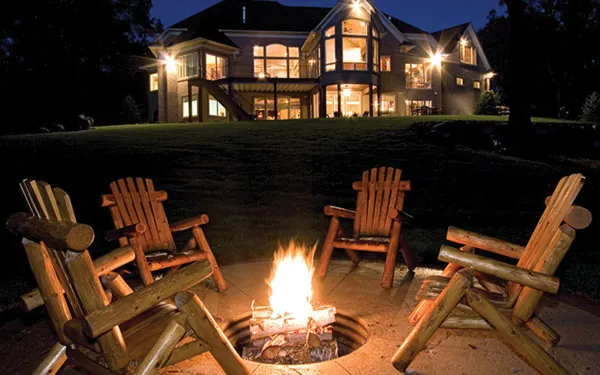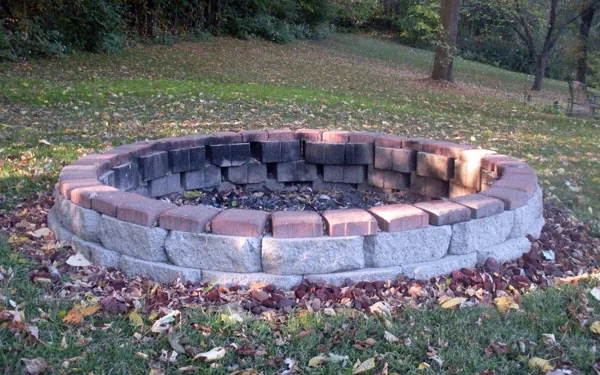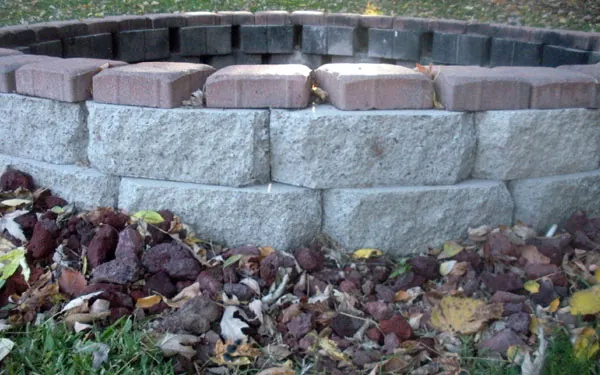 by Jennifer Jones
by Jennifer Jones

View This House Plan
View Other Craftsman House Plans
Fire pits have become an increasingly popular trend for enhancing outdoor living. The effect of a fire in an outdoor setting has been alluring to people since the beginning of mankind. The dancing flame has a mesmerizing affect that encourages one to settle in and unwind. Fire provides light, warmth and an essential cooking source, as well as comfort and relaxation for all those around it. Kids will love weenie roasts and cooking marshmallows over an open fire. While, adults will take in the fire’s warmth and enjoy a glass or wine or hot cup of coffee. Fire pit construction is not that difficult and can be built from easily available materials. Every homeowner who decides to build a fire pit wants to be sure it will be safe and cozy for those chilly spring and autumn evenings. Proper design will guarantee a safe and enjoyable addition to the yard that will last several decades.

View This House Plan
View Other Luxury House Plans
The first step to designing a homemade fire pit is choosing the location. The pit should be positioned far from overhanging trees, the house and any other flammable structure. An open area where there is even ground makes a perfect spot. It is a good idea to check local codes on open flames and get permits if required by the city. Begin to mark out the size and shape of the pit, whether it will be circular or rectangular. The optimal size for a fire pit is between 36 and 44 inches inside diameter. This provides enough room for a healthy fire, but still keep gatherers close enough to chat.
The builder of the fire pit will also need to choose a style, whether it is a stone fire pit, a gas fire pit, or even a custom made fire pit. Realize that building certain styles of fire pits is more complicated than others. The most basic pit will use very basic materials, whereas an elaborate one will be a bit more expensive and need more time to build.

To make stacking the stones easier, blocks made from cast concrete and molded to look like real stone will be the most useful. Since they are flat on the top and bottom, they stack neatly and some interlock for added strength. Some blocks have angled sides to form curves when placed next to each other to create a round pit.

A fire pit should sit low to the ground, with walls rising no more than a foot off the ground. The base of the pit wall should be buried below ground level in a hole with gravel. The gravel lining will help maintain good drainage and protection against frost. It will also provide stability with a level base for the stones to rest. Use a tamper to pack and level the ground for the pit. A good foundation will ensure a stable wall for years to come.
Now that a level foundation is set, begin placing the base blocks in the outlined area. Check each block with a level from front to back and side to side before placing the next block. This will ensure a level base for the remaining walls. If building a circular pit, many people will use a metal ring as a template to lay the first course of blocks. The steel ring will also help protect the concrete in the blocks and stones from the heat. This added precaution keeps the blocks from drying out and breaking down prematurely.
Once the base layer is placed, many builders will glue the blocks together with masonry adhesive or apply mortar in between the blocks. It is important to scrape off excess mortar that may ooze out so that the exterior of the fire pit will remain smooth and even.
Continue adhering block layers and staggering them so that no joints align. Since most concrete blocks are about 4 inches high, about three levels of blocks (including the base) will provide just the right height for resting your feet on while sitting in an outdoor chair.

View This House Plan
View Other European House Plans
If the fire pit is to be used for cooking, install rebar to the top of the structure and adhere it into place. Four pieces of rebar placed side-by-side and evenly spaced will support grill racks on top of the fire. This will allow the homeowner to be able to easily remove the grates for cleaning purposes.
Finally, wall cap pieces can be applied on the top of the structure. The stones may have to be cut to fit the structure properly. Use mortar or block adhesive to help join the capstones to the blocks. Once all the caps are installed, secure them in place with a bead of masonry adhesive on the sides of the raised metal ring. Be sure to wipe off any excess mortar or glue.
When you are done with all layers of the fire pit, prepare a mixture of veneer with the mortar. Adhere this mixture to the cracks and spaces between the blocks that may have been missed. Be sure to check that everything else is properly joined together. Leave the mortar and blocks to dry for two days.
Now it is time to install rock inside and outside the pit. Lay bags of clean rock within the circle to cover the bottom of the fire pit. Use a shovel to rake and smooth the rocks. A ring of rocks around your fire pit will create a barrier against flames spreading, keep people from stepping too close to the fire, and enhance the overall appearance of the pit. If you want extra safety, put a double ring of rocks around the fire pit to keep embers from catching on the ground.
The difficulty of fire pit construction depends mostly on the location where it will be placed; the materials available, and whether the pit will be used as a grill. It is an easy project that is sure to bring countless hours of enjoyment to your outdoor living situation. It will soon become the perfect place for hanging out with friends and family on cool nights. Now that the project is complete, just add some wood, fire it up, and enjoy your beautiful backyard fire pit.
Here are some related articles:
Save this article to:
back to top